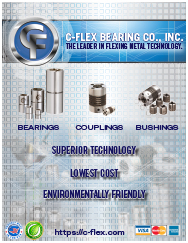C-Flex Pivot Bearings can be loaded in many different configurations to suit the customers needs. Properly loading pivot bearings is a crucial step to ensuring that they perform as expected.
Loading Diagrams | C-Flex Bearing Co., Inc.
Radial Loading
In radial loading the force is applied perpendicular to the sleeve. Depending on how the bearing is oriented this can put the springs in either tension or compression. Radial tension and radial compression loading are essentially mirror images of each other, rotating the bearing 180° in its mounting hole will change the loading from one to the other. Compression loading can result in buckled springs, especially with 10-series bearings, at smaller loads than it takes to cause yielding failure when loading in tension. Because of this, radial loading in tension is the preferred mounting orientation when possible.
More About Pivot Bearings
Radial Loading in Tension (Lt)
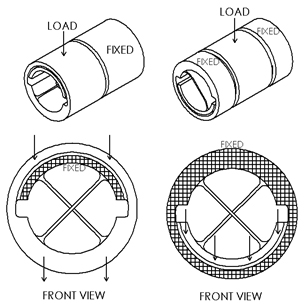
Radial tension loading is the preferred method of mounting C-Flex Pivot Bearings and results in the greatest load capacity. An easy check is that if the load is pushing on the thin side of the sleeve then the springs are in tension.
Radial Loading in Compression (Lc)
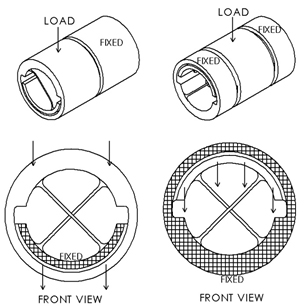
Radial compression loading results in a lower load capacity, most notably in 10-series bearings. If the load alternates between tension and compression loading then use the compression load capacity when selecting a pivot bearing.
Axial Loading

In axial loading the force is in line with the axis of rotation causing the springs to experience a shear force. The effect on the bearing is the same whether the load direction is towards or away from the bearing.
Moment Loading
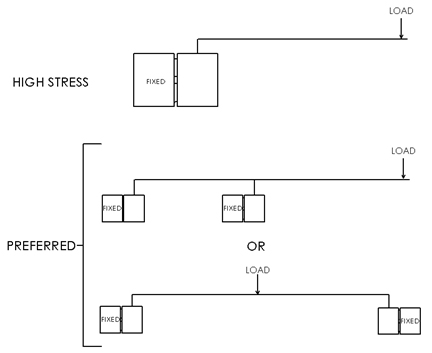
Moment loading is similar to radial loading but the force is applied at a distance from the bearing. This multiplies the stress in the springs resulting in a significantly lower load capacity as the load application distance increases. This type of loading should be avoided when possible. A better method is to use two bearings spaced apart from each other. If your application requires moment loading please contact C-Flex to receive the derated load capacity specific to your application.
Torsional Loading
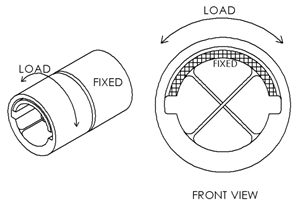
Torsional loading bends the springs into smooth arcs and causes the bearing to rotate about its central axis. The resulting angle of rotation is proportionately linear to the applied torsional load. The torsional load should never exceed the result of the maximum rotation angle multiplied with the torsional spring rate.


